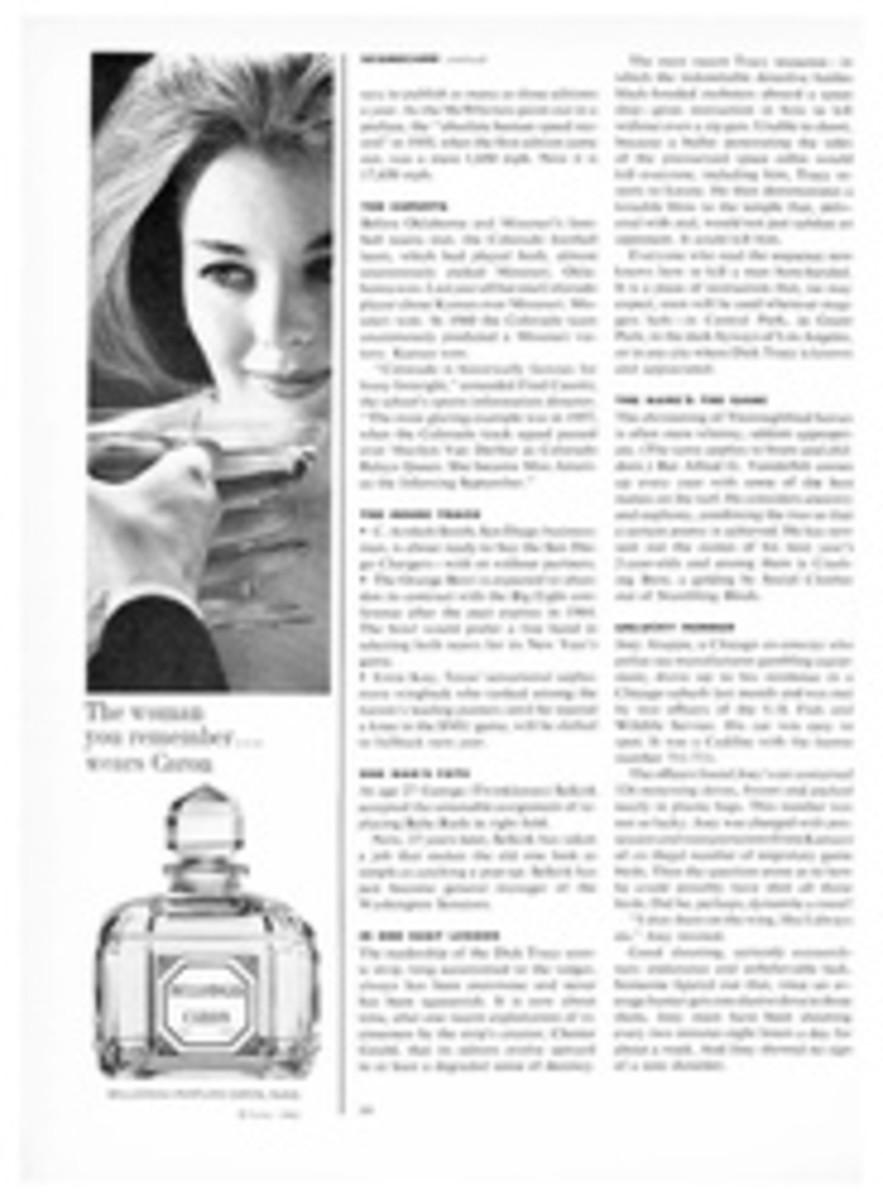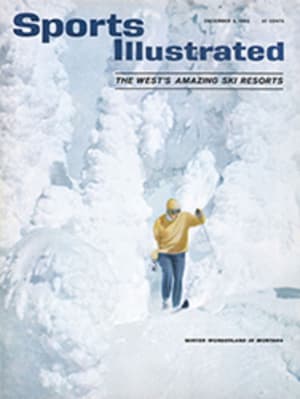
A fiesta of cars for Puerto Rico
As British Nassau awaited its ninth annual festival of speed, the proud, sensitive, vivacious Latins of a markedly different West Indies island, Puerto Rico, celebrated their first. In two weekends of road racing they tossed their warmest bravos to that affluent Pennsylvanian, Roger Penske, the thinking man's driver, who added the Grand Prix of Puerto Rico to recent rich victories in California (SI, Oct. 29). But to many visitors from the American mainland the puertorriqueños themselves were the event's principal stars, whether gaily viewing races or doing rhythmic merengues at cocktail dances in San Juan.
Where North America and the Caribbean are concerned, the racing map has become a crowded one. There is no longer a season. The sport is now all year long. Puerto Rico occupied one of the few remaining open dates on a fall and winter itinerary that has come to include the U.S. Grand Prix at Watkins Glen, N.Y. in October, closely followed by the international sports car races in Riverside and Laguna Seca in California, the Grand Prix of Mexico, Nassau Speed Weeks, a new sports and stock car program in Riverside beginning in January, the sports car and stock car events in Daytona Beach, Fla. in February and, finally, the 12-hour sports car run in Sebring, Fla. in March. A decade ago the only big winter events in existence were those in Daytona and Sebring.
Puerto Rico was a limited success. It might easily have been a disaster. To normal birth pangs were added alarm over the Cuban crisis and the distressing news that young Ricardo Rodriguez of Mexico had been killed in practice for his country's Grand Prix. Cuba nerves were blamed for reducing the Puerto Rico field of some 80 invited entrants by 25%. The death in Mexico removed not only Ricardo but also his accomplished brother, Pedro, who, quite naturally, chose not to race again so soon. Phil Hill, the world champion, did not appear. New Zealand's world-class man, Bruce McLaren, wasn't there, and neither was Porsche Driver Bob Holbert. Indeed, the only entrant of world stature was California's Dan Gurney.
Withal, a good race
But all this having been said, the fact remains that Puerto Rico's race meeting was attractive and entertaining:
ITEM: Setting. The course, a twisty 1.7 miles near Caguas, inland and south of San Juan, had cost a quarter of a million dollars to build. Wrested from fields of sugar cane and other explosive tropical vegetation, it snakes up and down lush, intensely green slopes and is handsome, though it has only one rather short straightaway and not a single high-speed bend.
ITEM: Prize money. For this ambitious beginning the sponsoring Grand Prix Société de Puerto Rico paid $20,000 in prizes. That would have been a princely sum for many famous, established events not so long ago.
ITEM: Organization. By his own account, Chairman David Ash of New York, a former racing driver who is sometimes called Mr. MG, began planning for Puerto Rico three years ago and spent most of the last 18 months in concentrated detail work. This was by no means a shoestring operation but one involving an outlay of $150,000. Among the financial backers were Esso petroleum, Coca-Cola, a local brewery, the island's hotel association and the government's department of tourism.
ITEM: Attendance. In contrast with Nassau, where the Development Board underwrites the races to generate more tourism but expects few actual spectators, the Puerto Rican people aimed to sell tickets. A sizable group—about 8,000—watched the final two-hour Commonwealth Cup Grand Prix. This writer has never seen a racing throng that enjoyed itself more. Everyone, it seemed, kept an eye on the road and an ear to his transistor radio, whence in trip-hammer Spanish came a fervid call of the race. Enthusiastic word of mouth and a vigorous sell to potential tourists should swell future attendance.
ITEM: The racing. Because the Caguas course is both slippery and abrasive—torture to tires—and subject to sudden rains, far more than routine driving skill and strategic planning is required.
Penske's problem
In the Governor's Cup the suspenseful question was whether Penske, with the best car, might lose enough time in a tire stop to be beaten by the underpowered Porsche of Dan Gurney. Penske thought he would need new rubber, Gurney thought he himself would not.
Penske, as expected, opened a long, long lead with his racy red Cooper special—the former Grand Prix single-seater that he had cannily converted to a sports car and with which he had impudently seized $17,000 in prizes by defeating Gurney and other more famous opponents in Riverside and Laguna Seca.
There was a whooping Latin lunge toward Penske's pit when, with but 20 minutes of the race remaining, he swept in. But, as it turned out, he needed no more rubber, and off he rolled to win by fully three laps. Penske, 25 and a Lehigh graduate (industrial management), thus added $3,000 to the swag already earned in his controversial Cooper. Second was another college man and fellow Pennsylvanian, Tim Mayer, 24 (Yale, English lit), who had thoughtfully purchased from Penske a swift, squat Cooper Monaco. The driver who looked the most pensive after it was all over was Gurney. He was profoundly tired of what had become a varsity drag—collegiate raiders copping big purses. Gurney was third, his position during most of the race.
But the biggest winner of all was Puerto Rico. It seems to be on the racing map to stay.

